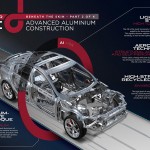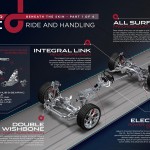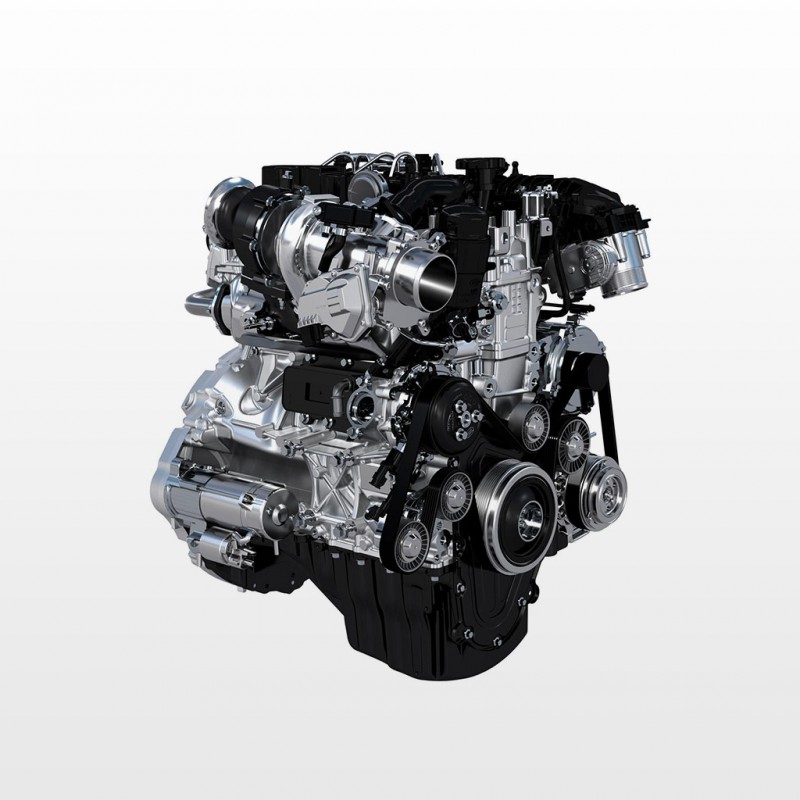Jaguar are pushing their forthcoming release of the much anticipated Jaguar XE – a compact executive set to take the fight to the dominating BMW 3-Series in the same sector.
While the German option offers an exceptionally well-built car and premium features encased in a steel body, the Jaguar is aiming to buck the trend and follow the much more expensive Jaguar XJ and XK philosophy, employing as much aluminium as possible to reduce excess weight.
Recently, Tesla announced their new offering, Model 3, will not feature aluminium in it’s construction (unlike their larger Model S) which will also compete in the same market segment as the Jaguar, BMW, Audi A4, Mercedes C Class, Lexus IS and many more vehicles vying for attention in an already crowded sector. Tesla cited reasons of cost associated with the use of aluminium which necessitates an increase in fundamental construction requirements, for example, due to it needing extremely high levels of electricity to weld.
Jaguar have opted for the aluminium route but not 100%. Instead, their new car will use 75% aluminium enabling the company to keep costs and weight down while keeping strength up.
Jaguar have developed a new alloy, RC5754 which makes use of recycled aluminium, dramatically reducing energy consumption in it’s creation as well as reducing the lifecycle CO2 level.
So why have Jaguar gone to all this effort? Put simply, because by having a lighter monocoque chassis, they’re able to increase both performance and fuel economy. Although engine options are yet to be finalised, Jaguar are employing their all new engine series called, Ingenium. These engines are at the cutting edge of petrol and diesel technology and should provide the new XE with plenty of engine options to suit each and every customer in the segment.
The question is, what will the combination of both new engine family and lightweight aluminium intensive chassis give to the new car? The answer, say Jaguar, is a projected fuel economy figure of 75mpg (4 litres/100km) on a combined cycle. This is likely to be the figure for the diesel offering in the line-up which tends to be the default option for reps and is the mainstay of most sales of alternative manufacturer vehicles. To put this into a hybrid perspective – of which there is still no word as to whether Jaguar will be offering the XE with a hybrid drivetrain – the BMW ActiveHybrid 3 achieves a measly 47.9mpg on the combined cycle and Lexus’ CT200h achieves 68.9mpg in most guises.
We’ve chosen both these cars as the BMW 3-series ActiveHybrid3 is a comparable car to the forthcoming Jaguar XE due to it’s size and levels of luxury. Similarly, the Lexus offers good levels of luxury but in a smaller, more compact vehicle. Of course, there are the usual other stipulations, such as hybrid vehicles benefit from generally lower tax bands, are congestion charge free in London and can save on fuel costs dramatically more than the official mpg figure, if used on short commutes in mostly EV only mode.
However, with fuel consumption figures as high as 75mpg, it is hard to argue in favour of a hybrid over a diesel, for the same type of vehicle in the same market segment. That said, if Jaguar were to offer a hybrid drivetrain within the new XE model range, that would be a real eye-opener and likely turn the favour back toward hybrids once more.



